Understanding Bajaj Induction PCB Prices: A Comprehensive Guide
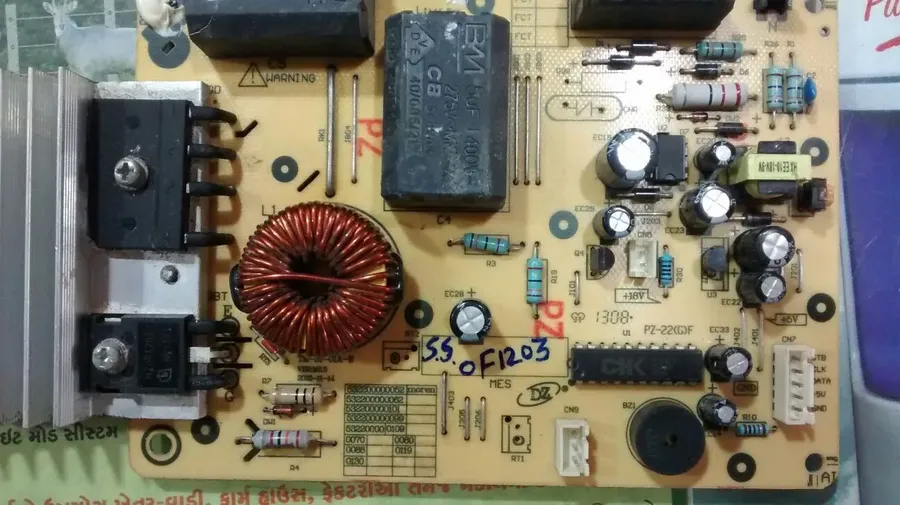
In today's fast-paced kitchens, induction cooktops have become indispensable, offering efficiency and convenience. At the heart of these devices lies the printed circuit board (PCB), a crucial component that dictates performance and functionality. The 'Bajaj induction PCB price' is a common query among users. This article will guide you through the factors influencing the price of Bajaj induction PCBs, common issues, repair options and what to consider when looking to replace or repair your cooktop, bridging the gap between cutting-edge technology and everyday practicalities.
Factors Influencing Bajaj Induction PCB Prices

The price of a Bajaj induction cooker's Printed Circuit Board (PCB) is not fixed; it's a dynamic value influenced by several key factors. Understanding these elements is crucial for consumers looking to purchase or replace a PCB, as it allows for informed decision-making and cost-effective solutions. These factors encompass the complexity of the PCB design itself, the specific components used in its construction, and the market conditions that can fluctuate.
- Model Complexity
The sophistication of the induction cooker model directly impacts the PCB's design and features. High-end models with advanced functions like precise temperature controls, multiple cooking zones, and smart features require more complex PCBs, typically leading to higher costs due to advanced design, specialized integrated circuits, and increased component density. - Component Quality
The type and quality of electronic components used significantly influence the PCB price. Premium components with superior performance and durability will increase the manufacturing cost, but will also improve the overall reliability and lifespan of the unit. Conversely, using lower-grade components may reduce the initial PCB cost, but can lead to premature failures and higher long-term maintenance costs. - Component Sourcing
Where the components are sourced can influence price. Components sourced from internationally recognized suppliers often come with a higher price tag reflecting their quality and compliance with international standards. Lower-cost options from regional suppliers may be available, but may not offer the same level of guarantee in terms of quality or consistency. - New, Refurbished or Repaired Status
The condition of the PCB significantly impacts its price. New PCBs, fresh from the manufacturing line, are the most expensive due to the use of all-new components. Refurbished PCBs, which are used boards restored to functional condition, will typically cost less. Repaired boards will vary in price depending on the extent of the repairs and the remaining life expectancy of the PCB. - Production Volume and Batch Size
The quantity of PCBs manufactured in a given batch can also affect the per-unit cost. Larger production volumes often benefit from economies of scale, allowing for lower per-unit costs. Smaller batches are often more expensive. Also, supply chain fluctuations, such as global shortages of components, can increase prices of even smaller production runs. This means even established products might see fluctuations. - Vendor and Market Conditions
The vendor from which the PCB is purchased also plays a role in the pricing. Authorized dealers and reputable online marketplaces may charge a higher price than smaller vendors or local repair shops, reflecting their reliability, guarantees and support services. Market conditions, including regional demand, competition, import duties, and shipping costs, can also cause price fluctuations.
Typical Price Ranges for Bajaj Induction Cooker PCBs
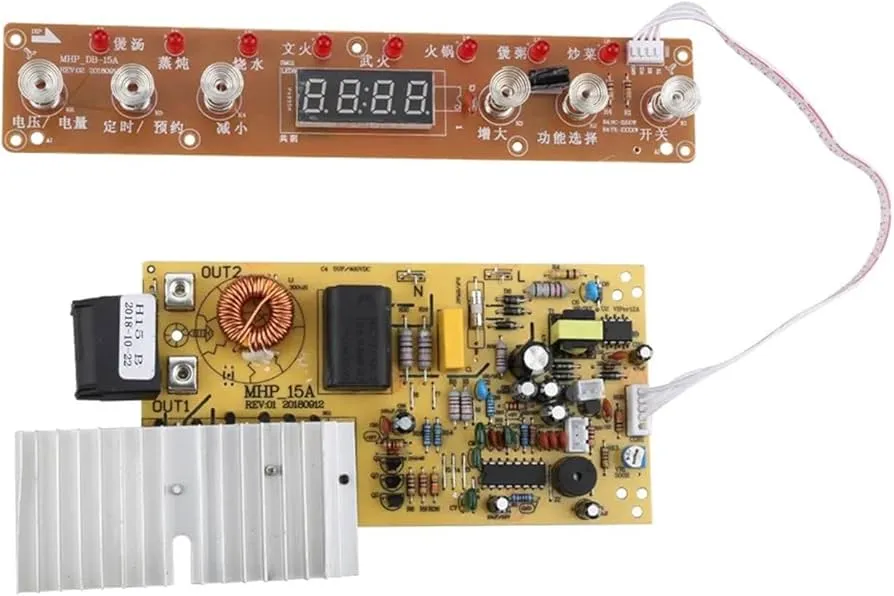
The price of a Bajaj induction cooker PCB (Printed Circuit Board) varies significantly based on several factors, including the specific model of the induction cooker, the complexity of the PCB design, and the vendor from which it is purchased. Generally, consumers can expect to encounter a price spectrum that ranges from budget-friendly options to more expensive, feature-rich PCBs. This section aims to provide a general understanding of these price ranges, which can help in planning for maintenance and repairs.
| Model Category | Typical Price Range (INR) | Factors Influencing Price |
|---|---|---|
| Basic Bajaj Induction Cooker Models | ₹400 - ₹800 | Simpler PCB design, fewer features, basic components |
| Mid-Range Bajaj Induction Cooker Models | ₹800 - ₹1500 | Moderate complexity, additional features like timer and preset cooking modes |
| High-End Bajaj Induction Cooker Models | ₹1500 - ₹2500+ | Advanced PCB design, numerous features, robust components, may include touch controls and smart connectivity |
| Older/Discontinued Models | ₹300 - ₹1000 (if available) | Prices may vary based on availability and condition; typically lower but may have limited vendor options |
It is important to note that these price ranges are indicative and can fluctuate based on market conditions, vendor pricing strategies, and the availability of spare parts. Prices can also vary regionally and across different sales channels, including online marketplaces, authorized service centers, and local repair shops. When purchasing a replacement PCB, it is advisable to compare prices from different vendors to find a competitive and reasonable cost, and also to verify the compatibility with the specific induction cooker model to avoid installation problems or performance issues. Always consider the component's quality and the vendor's warranty policy, as the cheapest option may not be the best long-term solution, because choosing a board with low-quality components can result in recurring problems and the necessity of repeated purchases, which is not economical and can lead to frustration.
New vs. Refurbished Bajaj Induction PCBs: Which is Better?
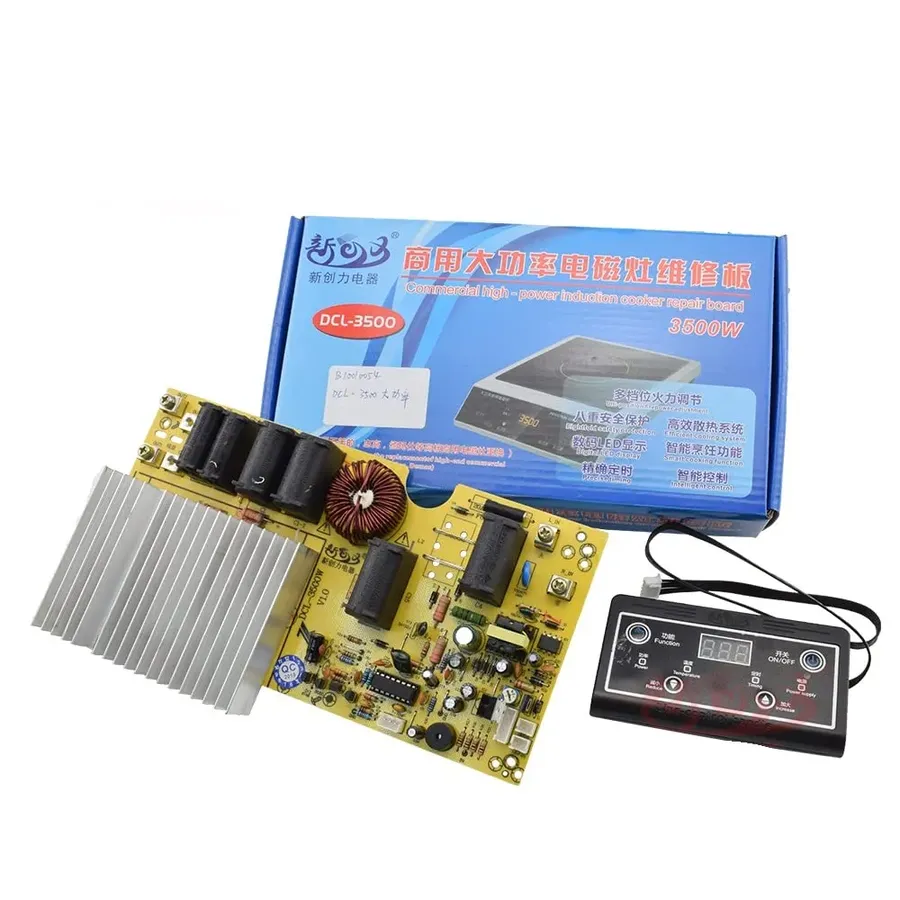
The choice between a new and refurbished Bajaj induction PCB hinges on a balance of cost, reliability, and warranty considerations. New PCBs offer the assurance of original factory specifications, while refurbished units present a more economical alternative, often with trade-offs.
| Feature | New Bajaj Induction PCB | Refurbished Bajaj Induction PCB |
|---|---|---|
| Price | Higher initial cost | Lower initial cost |
| Reliability | Expected to be highly reliable with original components | Reliability can vary; may have undergone repairs |
| Warranty | Usually comes with a manufacturer's warranty | Warranty is often shorter or may be offered by the refurbisher, not the original manufacturer. |
| Component Condition | All components are new and original | May contain replaced or repaired components |
| Longevity | Potentially longer lifespan due to new components | May have a shorter lifespan than new PCBs depending on the quality of the refurbishing process |
| Availability | May be readily available through authorized channels | May have limited availability and may require more searching |
When evaluating the purchase of a refurbished unit, it is critical to scrutinize the warranty offered and the reputation of the seller. Refurbished PCBs may have a varied history, potentially involving component replacements that could affect long-term reliability. New PCBs, in contrast, offer a baseline level of expected performance, but this certainty is reflected in their higher price.
Common Issues with Bajaj Induction Cooker PCBs
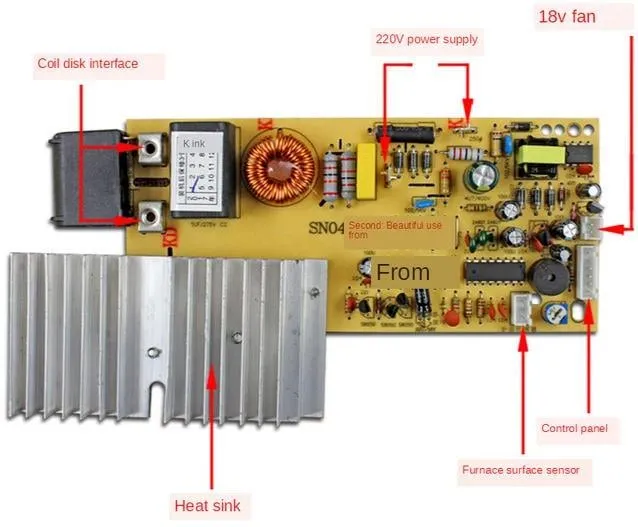
Bajaj induction cooker PCBs, while generally reliable, can experience several common issues that affect their performance. These problems often stem from component wear, environmental factors, or electrical irregularities. Understanding these common issues is crucial for effective troubleshooting and repair, whether undertaken by the user or a professional.
- Power Failure
A complete lack of power or intermittent power supply is a frequent issue. This can be due to a faulty power cord, a damaged fuse on the PCB, or a failure within the power regulation circuitry. Confirming the integrity of the power supply components is the first step in diagnosing this problem. - Sensor Malfunctions
Induction cookers rely on temperature and current sensors for safe and efficient operation. Malfunctioning sensors can cause erratic heating, error codes, or the cooker not recognizing cookware. These sensors, often thermistors or current transformers, can degrade over time or due to exposure to heat. Diagnosing sensor issues involves checking their resistance and continuity. - Overheating Issues
Overheating can damage the PCB and other components. It is commonly caused by a malfunctioning cooling fan, insufficient ventilation, or a failure in the thermal management circuit. This results in the induction cooker shutting down to prevent further damage. Addressing overheating involves cleaning the ventilation system and inspecting the cooling fan and thermal components. - Display Problems
Issues with the display, such as dimness, flickering, or a completely blank screen, can indicate a problem with the display driver IC on the PCB, or a connection issue. This can make it difficult to operate the induction cooker effectively. Repairing these issues may require component replacement or connection repair. - Control Panel Unresponsiveness
Failure of the touch or button controls to respond can be attributed to faulty buttons, corroded contacts on the panel, or a failure of the microcontroller on the PCB. This renders the induction cooker difficult or impossible to operate. Diagnosing control issues involves checking for contact continuity and the response of the microcontroller. - Component Damage
Physical damage, such as burnt components, visible cracks, or water damage can impair or completely disable the PCB. Causes include electrical surges, accidental spills, and component ageing. A thorough visual inspection is necessary to identify the extent of the damage and determine whether repairs are feasible.
DIY Repairs vs. Professional Servicing for Induction PCBs
Deciding between attempting a do-it-yourself (DIY) repair and seeking professional servicing for your Bajaj induction cooker's printed circuit board (PCB) requires careful consideration of the repair's complexity, your technical skills, and the potential risks involved. While DIY repairs might seem cost-effective initially, they can lead to further damage and safety hazards if not handled properly. Professional servicing, while more expensive, ensures a higher chance of successful repair and often includes a warranty.
| Aspect | DIY Repair | Professional Servicing |
|---|---|---|
| Cost | Lower initial cost; parts may be cheaper, but potential for costly mistakes. | Higher initial cost, includes labor and expertise. |
| Technical Skill Required | Requires a solid understanding of electronics, circuit diagrams, and soldering skills. | Requires no technical skill; handled by trained professionals. |
| Risk of Damage | High risk of causing further damage due to incorrect diagnosis or repair techniques. | Lower risk of damage; professionals have experience and use specialized tools. |
| Safety | Potential safety hazards, such as electrical shocks if safety precautions are not taken. | Safer, as professionals are trained in handling electrical components safely. |
| Warranty | No warranty provided; any subsequent issues may need further costly repair. | Warranty often included, covering the repair work and potentially the replaced parts. |
| Time Investment | Can be time-consuming if you are not experienced and may involve several attempts. | Typically faster as professionals have the necessary experience and tools to diagnose and repair quickly. |
For simple issues like loose connections or a blown fuse, a DIY repair might be feasible for those with basic electrical knowledge and the appropriate tools. However, complex issues involving integrated circuits (ICs), sensor malfunctions, or board damage should almost always be addressed by a qualified technician. Attempting repairs on complex electronics without proper expertise and equipment increases the risk of irreversible damage, making professional help the preferred option.
Where to Buy Bajaj Induction Cooker PCBs
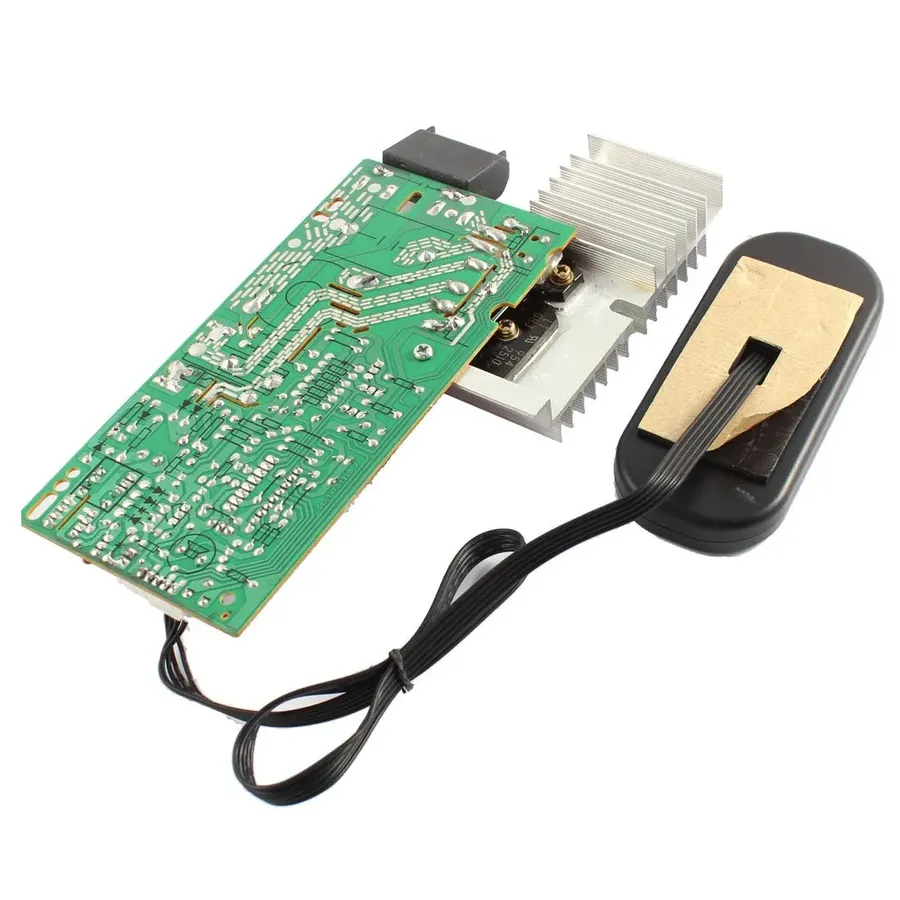
Sourcing a replacement Printed Circuit Board (PCB) for a Bajaj induction cooker requires careful consideration of the available options to balance cost, authenticity, and reliability. This section details the primary channels for purchasing these components, outlining their respective strengths and weaknesses.
- Online Marketplaces
Large e-commerce platforms often list Bajaj induction PCBs. These platforms offer a wide variety of options, potentially lower prices, and convenient doorstep delivery. However, the risk of counterfeit or low-quality parts is higher. It's crucial to verify seller ratings, read customer reviews, and confirm part specifications before purchase. Warranty claims can also be more challenging with third-party sellers. - Authorized Dealers
Purchasing from authorized Bajaj dealers is a safer option, guaranteeing genuine parts and compatibility. Although prices may be slightly higher compared to online marketplaces, you benefit from manufacturer warranties and reliable after-sales service. These dealers typically have access to specific models and can offer expert advice on compatibility. They may have limitations on stocking every model of PCB, so availability needs to be checked. - Local Repair Shops
Local electronics repair shops may offer an alternative source for Bajaj induction PCBs. They may have access to refurbished or new replacement parts. These shops often provide installation and troubleshooting services, which can be beneficial for less experienced users. However, parts availability may be inconsistent, and prices can vary widely. It is important to assess the repair shop's reputation and verify the quality of parts before purchasing.
| Purchase Channel | Advantages | Disadvantages |
|---|---|---|
| Online Marketplaces | Wide selection, Potentially lower prices, Convenient delivery | Risk of counterfeit parts, Inconsistent quality, Challenging warranty claims |
| Authorized Dealers | Genuine parts, Manufacturer warranties, Reliable after-sales service | Potentially higher prices, Limited availability of models |
| Local Repair Shops | May offer installation services, Access to refurbished/new parts, Potential for negotiation | Inconsistent availability, Variable pricing, Quality may vary |
Installation and Maintenance Tips for Induction PCBs
Proper installation and consistent maintenance are crucial to ensure the longevity and optimal performance of your Bajaj induction cooker's PCB. Following these guidelines will help you avoid common issues and extend the lifespan of your appliance.
- Installation Best Practices
Ensure the PCB is correctly mounted inside the induction cooker housing to prevent physical damage or loose connections, following the manufacturer's specifications. Use appropriate mounting hardware and observe electrostatic discharge (ESD) precautions during handling to protect sensitive electronic components. - Ventilation is Key
Ensure proper airflow around the induction cooker to prevent overheating. Make sure that the vents are not blocked or obstructed by other items, as this can lead to premature failure of PCB components. Good ventilation helps dissipate heat generated during operation and maintains the PCB within its operational temperature limits. - Power Supply Considerations
Use a stable and consistent power supply that meets the voltage and frequency specifications for the Bajaj induction cooker model. Avoid using extension cords or multi-plugs that are not rated for the induction cooker's power requirements. Power surges and fluctuations can damage the PCB and its electronic components. - Keep It Clean
Regularly clean the exterior of the induction cooker to prevent dust buildup. Use a soft, dry cloth to wipe the outer surfaces and avoid getting liquid into the internal parts of the appliance. Ensure that any spillages on the cooktop are cleaned immediately to prevent any entry to the PCB. - Regular Inspection
Perform periodic visual inspections of the induction cooker, particularly around the PCB area (if accessible). Look for signs of damage such as burnt components, loose wires, and bulging capacitors, and seek professional help immediately if you notice any such issues. Early detection of these signs can prevent more severe damage and costly repairs. - Avoid Overloading
Do not use cooking utensils that do not meet the induction cooker's size or weight specifications as this can cause unnecessary stress on the heating elements and the PCB. Using inappropriate utensils may also lead to uneven heating or damage to the cooktop. Stick to the manufacturer's recommendations for cookware materials and sizes. - Professional Check-up
Schedule regular professional maintenance checks to ensure all components are working correctly. A qualified technician can assess the health of the PCB and other internal components of the induction cooker and can identify and address potential problems that may not be obvious to the user.
Frequently Asked Questions About Bajaj Induction PCB Prices, Compatibility, and Repairs
This section addresses common questions regarding Bajaj induction PCB pricing, availability, compatibility, and troubleshooting. It aims to provide clear, concise answers to help you understand the various aspects of these critical components.
- What is the typical price range for a Bajaj induction cooker PCB?
The price of a Bajaj induction cooker PCB can vary based on the model and vendor, ranging from approximately ₹500 to ₹2500. Complex models with advanced features may command higher prices, while basic models tend to be more affordable. - Are Bajaj induction cooker PCBs interchangeable across different models?
No, Bajaj induction PCBs are not generally interchangeable across different models. Each model is designed with specific component layouts and electrical specifications. Using an incompatible PCB can lead to malfunctions and potentially damage the induction cooker. Always check the part number to ensure compatibility. - Where can I purchase a genuine Bajaj induction PCB?
Genuine Bajaj induction PCBs can be purchased from authorized service centers, official online stores, or reputable electronics part retailers. Avoid purchasing from unreliable sources to ensure you get a genuine part that is compatible and functions as intended. Always verify the seller's credibility and customer reviews before purchase. - How can I diagnose a faulty Bajaj induction cooker PCB?
Common signs of a faulty PCB include the induction cooker failing to power on, intermittent power issues, error codes on the display panel, or inconsistent heating performance. Begin troubleshooting by checking power supply connections and external components. If the issue persists, it likely indicates a PCB malfunction. Consult a professional technician for complex repairs. - What factors affect the cost of repairing a Bajaj induction cooker PCB?
Repair costs can vary depending on the nature of the damage, the complexity of the repair, and whether individual components can be replaced or if the entire PCB needs replacing. Factors influencing repair cost include labor charges, and the cost of components or the entire board if a repair isn't feasible. - Is it safe to attempt a DIY repair of my Bajaj induction cooker PCB?
Attempting a DIY repair on a Bajaj induction PCB is generally not advisable unless you have prior experience in electronics repair and a thorough understanding of the circuitry. Incorrect repairs can damage the PCB further, create electrical hazards, or void the warranty. Unless qualified, it is best to seek professional help. - What are the benefits of opting for a refurbished Bajaj induction PCB?
Refurbished PCBs can be a cost-effective alternative to new ones, but they may also carry a higher risk of failure compared to new ones. Refurbished PCBs are generally inspected and repaired to ensure they work. If choosing this option, ensure that the PCB is supplied by a reputable dealer with a warranty to safeguard against premature failure.
Comparative Analysis of Induction PCB Prices
A comparative analysis of Bajaj induction PCB prices across various vendors and models is essential for consumers seeking the best value. This section provides a structured overview to aid in informed purchasing decisions by comparing typical price ranges for different Bajaj induction cooker PCB models from various sources.
| Bajaj Induction Cooker Model | Vendor/Source | Approximate Price (INR) | PCB Condition |
|---|---|---|---|
| Bajaj Majesty ICX 7 | Authorized Service Center | 1200-1800 | New |
| Bajaj Majesty ICX 7 | Online Marketplace (Generic) | 800-1500 | New/Refurbished |
| Bajaj Popular Model (Generic) | Local Repair Shop | 700-1200 | Refurbished/Repaired |
| Bajaj Popular Model (Generic) | Online Marketplace (Generic) | 900-1600 | New |
| Bajaj 1600W Model | Authorized Service Center | 1500-2000 | New |
| Bajaj 1600W Model | Online Marketplace (Generic) | 1200-1800 | New/Refurbished |
| Bajaj High-End Model | Authorized Service Center | 2000-3000 | New |
| Bajaj High-End Model | Online Marketplace (Generic) | 1800-2500 | New/Refurbished |
Understanding the nuances of 'Bajaj induction PCB price' can significantly impact your decision-making process, whether you're looking to repair or replace your induction cooker. By weighing factors like price ranges, new versus refurbished options, and understanding common issues, you can make informed choices, ensuring the longevity of your kitchen appliances. Remember, proactive maintenance and selecting the correct PCB is key for reliable kitchen technology. Knowing the cost of repairs is also an important consideration before deciding to replace the entire unit, ensuring optimal performance and saving money. Ultimately, ensuring you understand the price implications can help you keep your Bajaj induction cooker functioning smoothly.
 AnyPCBA
AnyPCBA